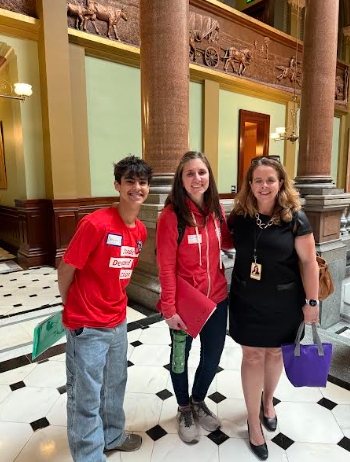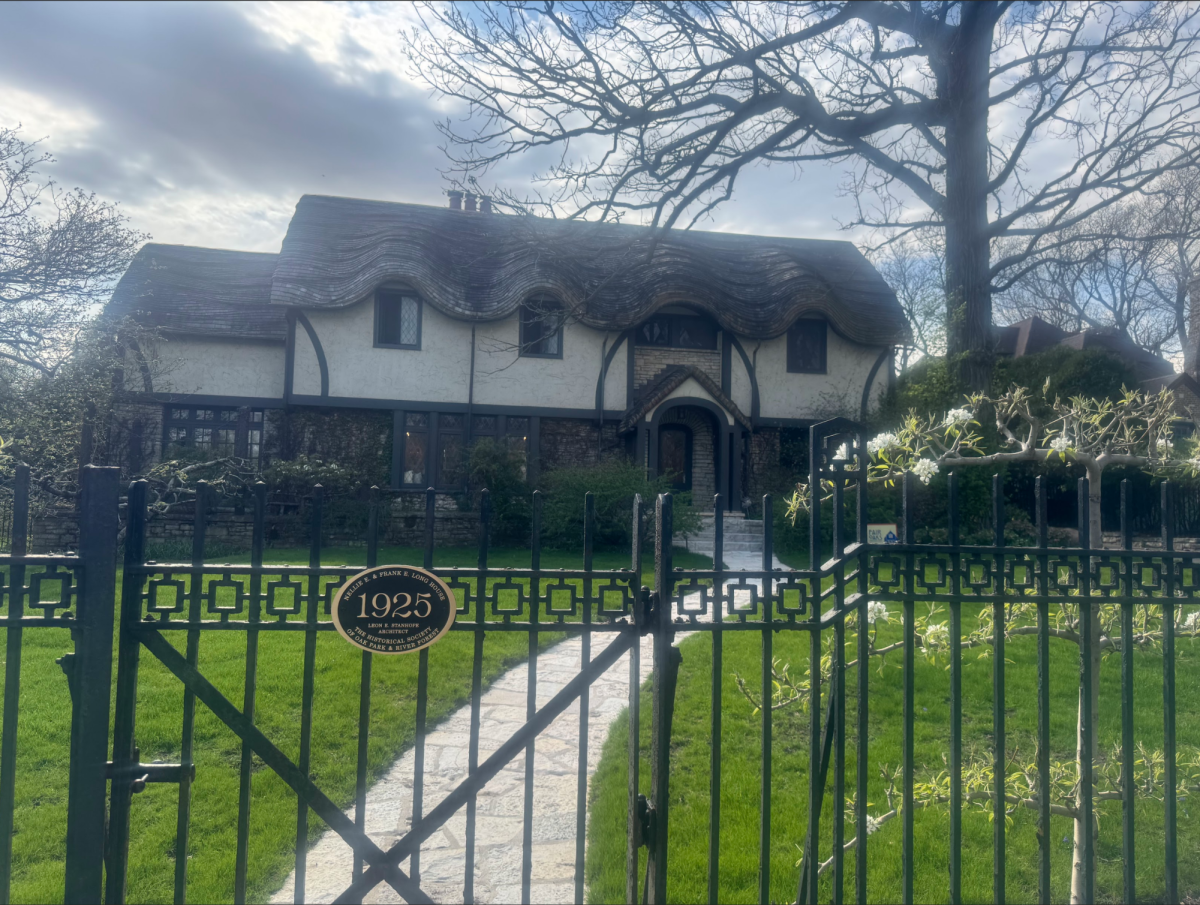Volunteers came together on Saturday, Feb. 10 to burn and chemically poison buckthorn, the invasive species responsible for driving out the native greenery of Thatcher Woods.
The volunteers ranged from students attending Oak Park and River Forest High School to members of the Thatcher Woods Savannah Restoration Project, a community-based organization that aims to safely remove harmful invasive species.
Invasive species “grow, and they reproduce really fast, and they just outcompete all the other species,” said Malcolm Mitchell Cheblani, one of the student volunteers and vice president of OPRF’s Environmental Club.
Buckthorn is a shrub or tree with shiny dark green leaves that keep their color late into the fall. Selling buckthorn is prohibited under the Illinois Exotic Weed Act because it chokes out other plant life.
At the volunteer site, it was clear to see how much the buckthorn had taken over the surrounding plants and habitats of wildlife. The shrubs sat close together, entangled, and had also grown very high.
“We’re in an oak savanna system here,” said Cindy Wong, the faculty sponsor of OPRF’s Environmental Club. “And if you look around you, we have some oaks, but all this stuff here that’s…blocking all the view, this is buckthorn. So we want to clear space.”
Volunteers who arrived at about 10 a.m. successfully cleared out a significant chunk of the site an hour later. Throughout the whole process, the sound of chainsaws and the smell of smoke were present as the volunteers cut down and burned the buckthorn nearby.
Cheblani explained that cut buckthorn must be burned to keep its seeds from spreading into the soil. The stumps must be treated with herbicide to keep them from sprouting again.
One of the volunteers applying herbicide was Adrian Fisher, a volunteer at Thatcher Woods and volunteer steward of National Grove Forest Preserve in North Riverside. “We use two chemicals, depending on the situation,” she said. “One is called triclopyr, or Element 4. The other is Roundup Custom, which we use where it is wet, like near the river.”
Fisher explained the importance of preventing the herbicide from killing other plants. “When we’re herbiciding, what we’re doing is called ‘cut stump,’ which is where we brush it very carefully on the stumps after we cut down the buckthorn. That way the herbicide doesn’t spread and kill other things,” she said.
Those who use herbicide must have a state license, she added.
Tackling environmental problems can feel overwhelming, Cheblani said. But coming out to the woods to clear invasive species is a way to make a real impact. “You can make a difference…as a person, and it’s easier to make a difference in these aspects.”
Wong agreed, saying the volunteers are impactful and appreciated.
The upcoming invasive species conservation day will be every second Saturday of every month during the school year, Wong said. The goal is to continue meeting until this site is cleared of buckthorn. Then on to saving the next site struggling due to invasive species.






